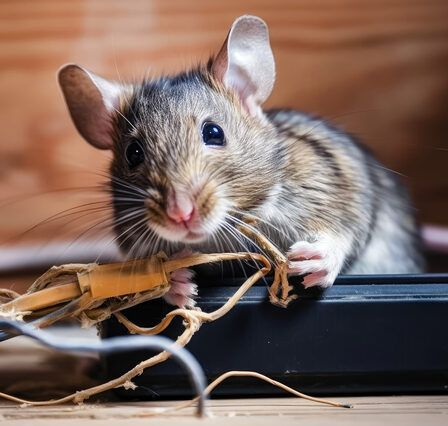Rodent Facts & Information


About Rodents
Rodents never announce their arrival; they slip through crevices no wider than a pencil, exploring crawlspaces, walls, and attics long before you realize they are inside. At first, it may be a subtle rustle in the quiet hours or a single dropping in the pantry. However, behind the scenes, they could be breeding, storing food, and chewing through primary parts of your home. Under ideal conditions, a small intrusion can eventually turn into a full-scale infestation in just weeks.
Indeed, rodents aren’t harmless scavengers. Their constant gnawing, driven by teeth that keep on growing, puts wiring, insulation, stored food, and even plumbing at great risk. Once they set up a foothold, they rarely leave voluntarily. Without localized control, a small problem can quickly evolve into costly structural and health issues.
Identification
Spotting Mice and Rats
Common house mice commonly measure approximately 2.5 to 4 inches long (excluding the tail). They have short, soft fur in shades of brown or gray, cream-hued bellies, rounded ears, and vivid, beady eyes. Rats are a lot bulkier, stretching 6 to 9 inches without the tail, with coarser fur, longer snouts, and a more imposing build.
Indications of their presence can include dark, pointed droppings that are generally found along baseboards or inside cabinets. Smudge marks from the oils in their fur may appear on walls or floor edges where they travel repeatedly. Dusty or undisturbed areas can reveal tiny footprints or tail drag marks, revealing hidden activity.
Characteristics
Why They Are Hard to Get Rid Of
The main reason why rodents are hard to get rid of is that they are remarkably adaptable. Mice can squeeze through a gap the size of a dime, whereas rats can compress their bodies to fit through slightly larger holes. Their sensitive whiskers guide them through darkness, and their keen senses accurately detect food or danger from surprising distances. The vast majority of these rodents remain active at night, foraging while the household sleeps.
Additionally, rodents create nests from paper, insulation, fabric, and other soft materials, tucking them away in walls, storage boxes, or behind heavy appliances. Their reliance on constant travel paths makes them elusive at first, but once these rodent routes get mapped, patterns start to emerge.
Habits
Where They Hide and Operate
Rodents prefer locations where warmth and food are close together. Pantries, kitchens, basements, and attics are top selections. Mice love to set up nests within a short distance of food sources, whereas rats may roam further, tunneling through soil or moving discreetly through wall voids.
At night, you might hear faint scratching on ceilings or walls. In certain cases, you may see gnaw marks on packaging, wires, or furniture. Droppings, chewed materials, and disturbed food storage are prevalent byproducts of their activity, normally contaminating far more than they can consume.
Health Risks
Why Immediate Action Matters
It’s essential to keep in mind that rodents can transmit more than 30 diseases, and that includes leptospirosis, hantavirus, and Salmonella. Contamination occurs through saliva, urine, droppings, or indirectly when food or surfaces come into contact with infested zones. For those with allergies or asthma, airborne particles from nesting locations can trigger or worsen symptoms.
Moreover, the activity of rodents also brings secondary risks. Chewed wiring can spark electrical fires, and the presence of mice or rats may introduce fleas, mites, or ticks into the home. Spotting even a single rodent is normally a sign that more are nearby. This makes swift, professional intervention critical to preventing the problem from spreading.

